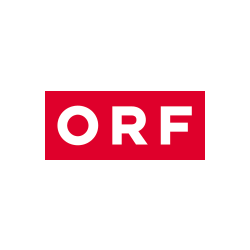“KulturMontag” on March 22nd: Youth against the climate crisis, cleaning cultural technology, temporary disorder in parliament
Also: New edition “Icons of Austria: The Becoming of the Country”
Vienna (OTS) – “KulturMontag” presented by Clarissa Stadler on March 22, 2021 at 10.30 p.m. on ORF 2 is dedicated to the commitment of young people in the fight against the climate crisis, which is flaring up again despite the pandemic. Interesting new books are also the topic of the program: A new photo book by the Viennese artist duo “Honey & Bunny” about cleaning as a cultural technique will be presented, as will a book project by the photographer Pascal Petignat, who teaches at the Academy of Applied Arts in Vienna with students artistically immortalized the vacant Vienna Parliament building shortly before the renovation in almost 800 pictures. Following the magazine, a new edition of the series “Icons of Austria: Vom Werden des Landes” (11:30 p.m.) is on the program.
Young people fighting the climate crisis
Almost 400,000 people in Austria have signed the climate protection referendum. The government now wants to implement some demands. So is everything fine with the climate? No, thinks the Thunberg generation. According to a recent study, 85 percent of all children and adolescents are afraid for the planet. While the Corona crisis is overshadowing the climate crisis, the young generation is showing itself to be inventive with various projects. Books like the one by high school graduate Tamara Glück – the love story in a world divided by climate change – written under the title “Goldmond” – or the bilingual children’s project “Grandma, what is snow?” By the five HTL students Julian Baaske, Alexander Frauneder, Leonhard Beisroth, Yunus Emre Demirçan and David Minichshofer appeared. On International Forest Day, the climate change app Beat3 and the Jane Goodall Institute Austria start the Growing Together Challenge. You want to motivate young people to do even more for our forests, as they are a crucial building block against the climate crisis. The kids can get know-how on the subject in the current exhibition “Alles Holz” in the Vienna Children’s Museum.
New illustrated book about “cleaning as a cultural technique”
They rang the doorbells of complete strangers and asked if they could just wipe, vacuum and scrub properly in their apartments. In 2015, at an art festival in Ebensee, the Viennese artist duo Sonja Stummerer and Martin Hablesreiter, who have been posing as “Honey & Bunny” on bizarre photos and food art works of art, with the human passion for cleaning and tidying up, began in 2015. Just in time for Easter, when the mania for cleaning reawakens in society, the two have published a splendid illustrated book: “Cleaning – a cultural technique”. In the scientifically grounded text with many footnotes, cleaning behavior is described as a community-building social ritual. The book is a hilarious guide to wiping and vacuuming – and a warning about the pitfalls of “dirty work”.
Temporary disorder in parliament – in books and films
The Austrian parliament building has been refurbished since 2017, and the National Council and Federal Council have been meeting in their alternative quarters in the Vienna Hofburg since then. A house with history and lots of stories behind it, thought the photographer Pascal Petignat, who teaches at the Academy of Applied Arts in Vienna. Even before the major construction work began, he was given the opportunity to get to know the countless rooms of the venerable house on the Wiener Ring better. Together with around 20 students from the applied photography and time-based media class, Petignat took photos in the empty plenary halls and foyers, former club rooms and smoking rooms. The “782 images from the Parliament building in vacancy” – as it is called in the subtitle – recently appeared in the book “Temporary Disorder”. A cinema documentary is currently in the making.
Documentation “Icons of Austria: The Becoming of the Country” (11.30 p.m.)
In the ORF series “Icons of Austria”, objects are brought to life that have a symbolic meaning for the history of the country. Whether important works of art or unspectacular everyday items: every object tells a story about itself and the people who used it. The latest episode by Peter Beringer is about “Vom Werden des Landes”, which is illustrated using three “icons” that support the state. Three objects with legends entwined around them, but which actually document the most important upheavals in the history of Austria: the coin of Marc Aurel, the Ostarrichi certificate and the Austrian State Treaty.
The coin of Marcus Aurelius is an inconspicuous sesterce from the time of the Roman emperor of the same name from the 2nd century AD. It shows the ruler who, after the military campaign across the Danube into the hostile land of the Germanic Marcomanni in present-day Austria, set up the center of Rome’s rule.
In the “Ostarrichi Urkunde” from the year 996, the term “Austria” appears for the first time as a designation of the area that represents the nucleus of the country from which the great power Austria would later become. The small and actually completely insignificant document was not celebrated until much later as the laying of the foundation stone for “Thousand Years of Austria”.
The most important contemporary document of Austria is the State Treaty from 1955. In the myth about its creation, the Second Republic is portrayed as the happy little country that defies the world powers and uses cunning and cleverness to find a place for itself in the sun. This story is symbolized by “Figl’s armchair”, one of the imperial furniture that was brought from the Imperial Furniture Collection to the Belvedere for the State Treaty ceremony.
Inquiries & contact:
http://presse.ORF.at
